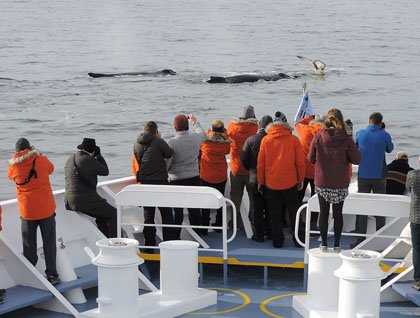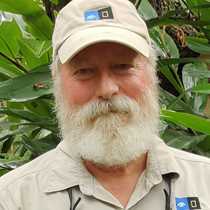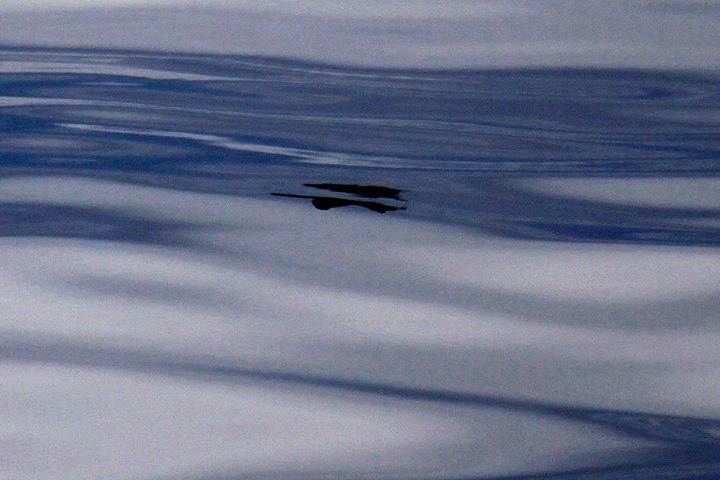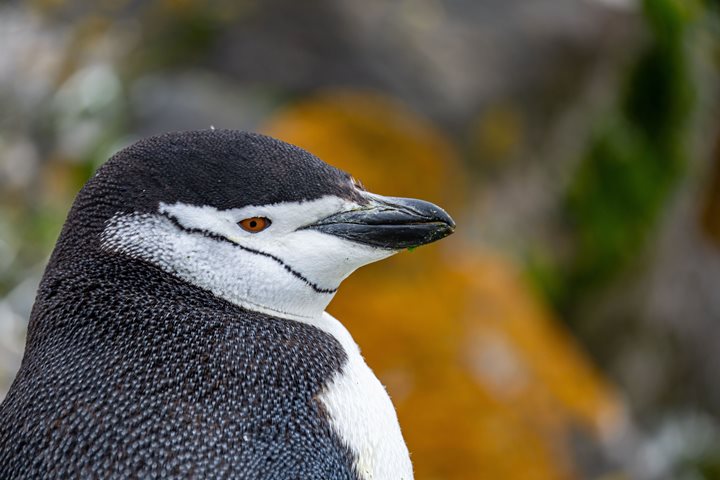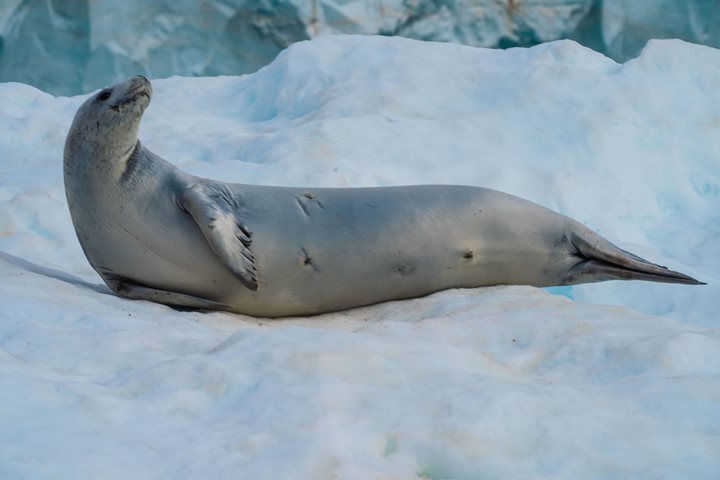We entered Andvord Bay, a short distance south of the Errera Channel, during breakfast. Conditions were nearly perfect as we sailed into the long, deep bay and made our way to a small side bay known as Neko Harbor. This small, natural harbor gets its name from a whaling ship called NEKO, which operated here in the early 1910s and the early 1920s. On one side of Neko Harbor there is an exposed bit of rock projecting out from the edge of an immense glacier, which afforded us a nice, protected landing on a sand and boulder beach. The glacial ice surrounding Neko Harbor comes from the great ice sheet covering much of the Antarctic Peninsula. It is also worth noting the land and terrestrial ice around Neko Harbor is actually part of the Antarctic continent.
Of course, gentoo penguins long ago found this place and today probably about 400 pairs of them use this as a breeding site. We landed close to their preferred landing site, but avoided using their trail system they have developed to reach their breeding areas. Fortunately, the ice directly behind and above Neko Harbor is fairly static, because it is off the main flow of the glacier, and it gave us an excellent opportunity to hike up onto a relatively safe section of thick ice to get a spectacular view of the surrounding area. The hike took us out onto a small exposed rocky overlook where we could admire the little natural harbor far below us. Looking down into the many crevasses in the glacier flowing into the harbor gave us a sense of the very real danger and extreme hardships the early Antarctic explorers had to deal with when exploring by foot and/or dog sledges. Watching the long snaking line of hikers make their way up onto the glacier brought to mind those old 19th century photos of gold rush miners traversing the infamous Chilkoot Pass. The waters near the head of the Anvord Bay were chocker-blocked with growlers, bergy bits, and icebergs generated by the many glaciers feeding terrestrial ice into the bay. During our morning visit, we heard numerous rumblings from the glacial activity and witnessed one impressive avalanche on the steep slope inside Neko Harbor.
In the early afternoon, the ship sailed into Dallmann Bay, which is actually a sound located in the Palmer Archipelago between Anvers Island and Brabant Island. We had hoped to encounter humpback whales in this waterway, because it is often a good place to find krill shoals. We were not disappointed! Most of the afternoon and early evening were spent slowly traversing this huge body of water and humpback whales were spread all about the area. We sighted individual whales, mother whales with calves, and small groups of communally feeding whales.
The Galley staff served ice cream and champagne on the Foredeck during Tea Time, so we could do some communal feeding of our own. At the same time, masses of krill could clearly be seen on the bridge’s sonar directly below us. We stopped the ship numerous times and were rewarded with various groups of from three to five individuals approaching us. It was amazing to watch and hear these great animals swimming, feeding, and breathing all around our vessel while we simply drifted. We witnessed a very interesting behavior known as “bubble-net” feeding close to the ship, by which at least one whale in each group swims in a tight circle and creates an encircling sheet of rising bubbles that apparently frightens and concentrates the krill in the center. This makes it easier for the whales to then swim up and feed upon the concentrated krill masses. It is a very interesting and successful strategy. We eventually completed our transit of Dallmann Bay and then began our recrossing of the Drake Passage back toward Tierra del Fuego. After dinner, we were regaled and entertained by our very talented crew members with an unforgettable National Geographic Orion Crew Show.

